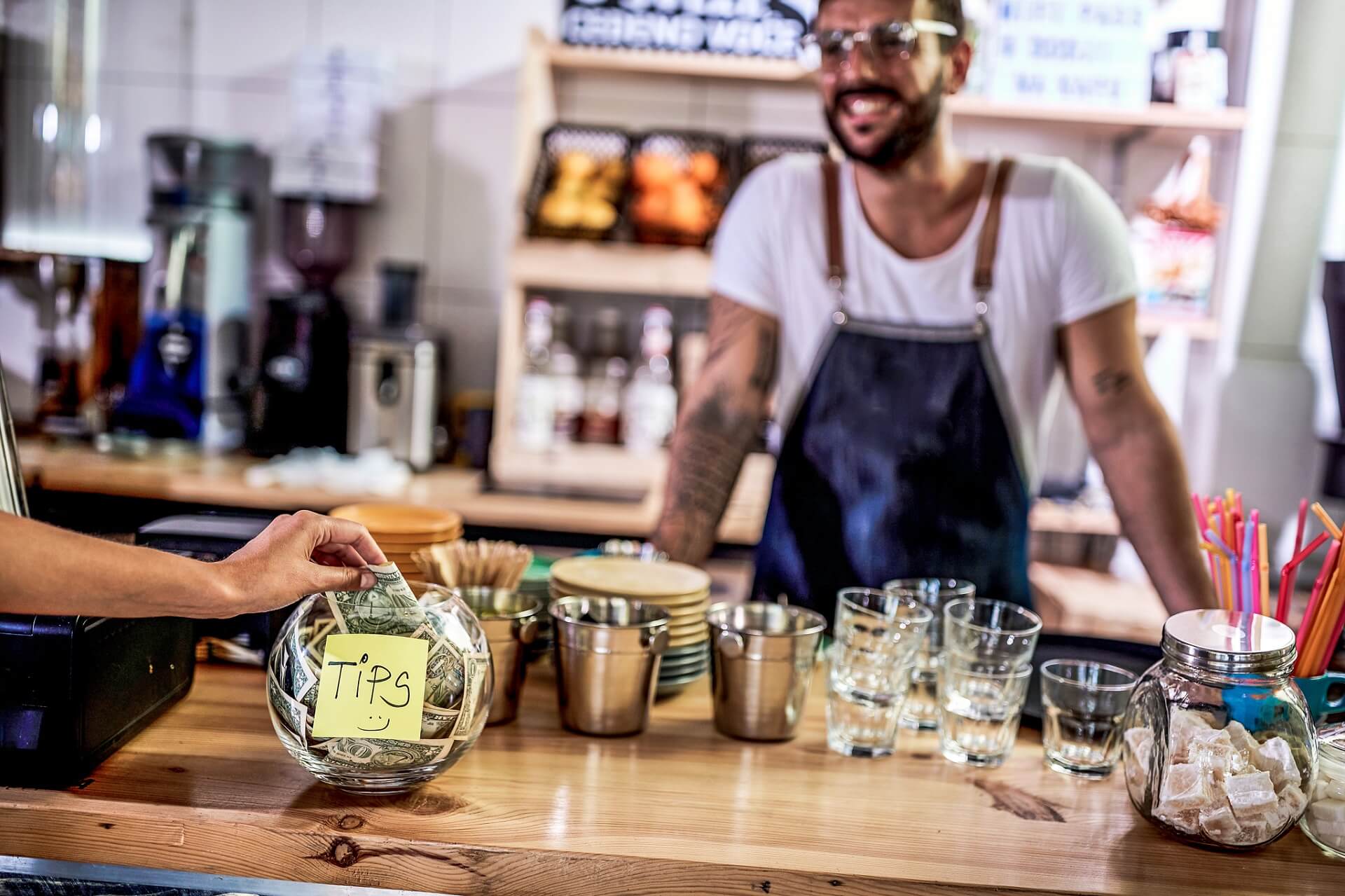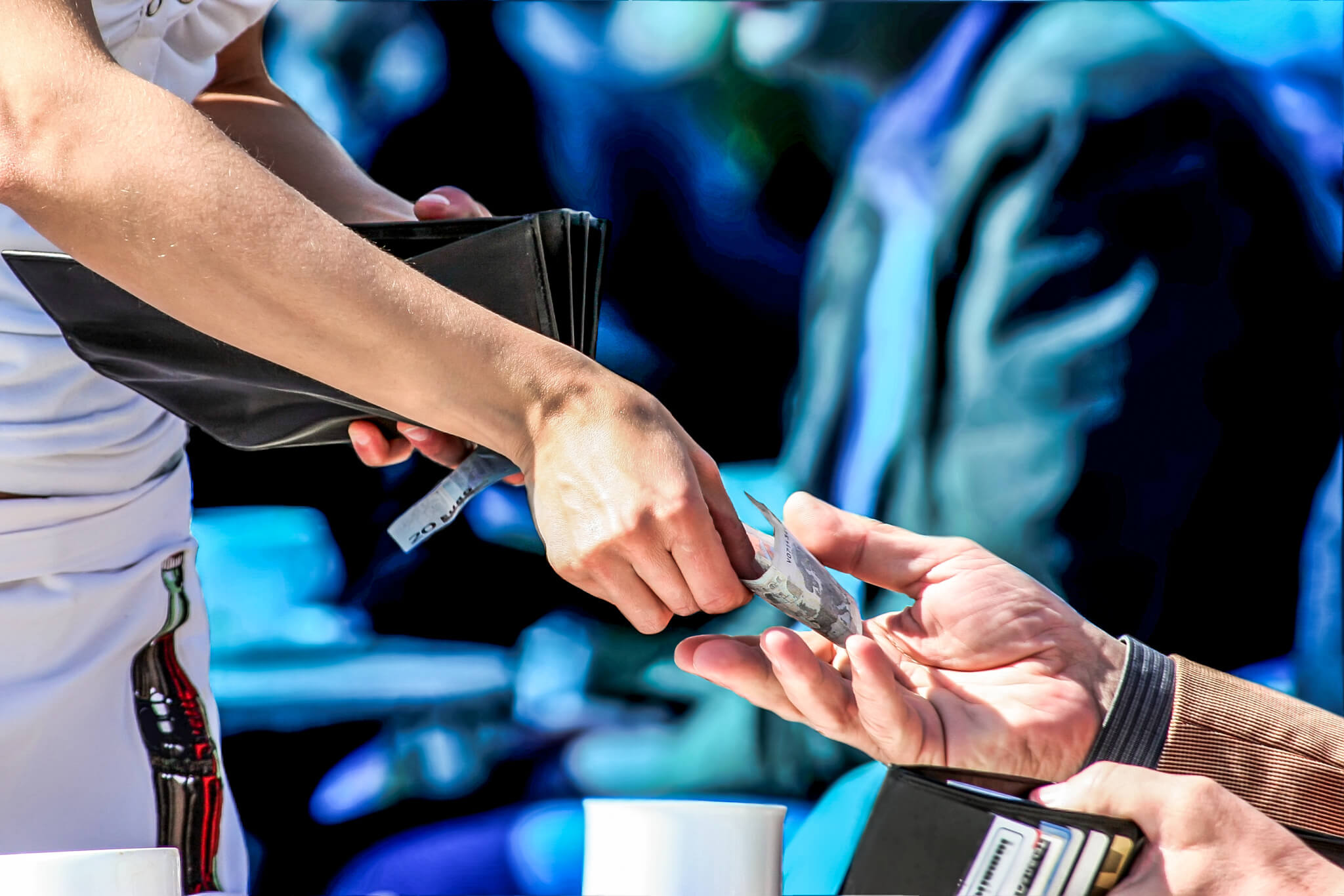Gratuity or token of appreciation?
The issue of tipping in the gastronomy sector is a constant source of debate. After the German anchorwoman Anja Reschke recounted the experiences of a waiter on Twitter at the end of July 2022, the debate broke out again. Everything is getting more expensive, so people tend to hold on to their money these days.

Image: Fotolia | tanatat
A 2022 published study by Jägermeister confirmed the status quo in Germany: 1,196 people were surveyed, including 106 bartenders, 116 restaurateurs and 68 taxi drivers. The result: Corona has changed the way people go out – basically, they go out half as much as they used to. As a result, this means fewer tips. According to the study, 92 percent tip in restaurants, 60 percent in bars and 54 percent in pubs. The average tip was five percent. That is half the ten percent normally expected in Germany! Most of the restaurateurs interviewed emphasized that tipping is more than just a sign of appreciation; it also provides motivation for employees.
Social psychologist and marketing professor Michael Lynn from Cornell University in New York is an expert on US tipping culture. His latest study on tipping and Corona shows that tips increased during the pandemic, such as for pizza delivery services as well as at fast food and full-service restaurants. At the same time, however, there was a one to two percent decline in face-to-face dining transactions at restaurants with service. “The more extroverted people are in a country, the larger the number of professions where tips are given, and the higher the tipping percentages,” the tipping expert said. Tipping 15 to 20 percent is common in the USA. In most U.S. states, tips are not a perk, but rather the main income. Service workers in the restaurant industry are paid a very low minimum wage, and therefore rely on generous diners. To this day, how much you should tip is a controversial topic. After all, the fact is that each guest can still decide for themselves whether or not they leave a tip for the service staff.

Image: AdobeStock | luckybusiness
History: ‘tips’ already around in the Middle Ages
Tipping – where does the term come from? A look at history: The word “Trinkgeld” (tip in German) can be traced back as far as the late Middle Ages in Germany. The person giving the tip implied that the tip should be used to drink to their health. Bibalia (latin for tips) were already included in the weekly accounts during the construction of Prague Cathedral between 1372 and 1378. Later, in his 1788 treatise “On Human Relations,” Adolph Freiherr von Knigge recommended “giving the wagon master a good tip.” However, the origin of the internationally accepted word “tip” cannot be clearly determined. British inns reportedly had bowls labeled “To Insure Promptitude,” where you should toss coins up front as a tip. This was done to “assure quick service.” Another possible origin of tip is from the slang word “to tipple”.
Even in the past, tipping was sometimes controversial. Around 1900, an “anti-tips league” was even founded in Germany, but it was ultimately unsuccessful. There were also various legislative initiatives to ban tipping until the Weimar Republic. Tipping was also not necessarily popular in other countries: In 1909, Washington was the first US state to pass an anti-tipping law.

Image: AdobeStock | DWP
Legal information on the subject of tipping:
What is the legal situation in Germany?
We asked lawyer Dr Gerhard Engelmann, District Managing Director of Dehoga-Middle Franconia, about this topic. “Tipping in Germany is not mandatory. It is a voluntary gesture, an extra thank you from the guest,” says lawyer Dr Gerhard Engelmann. This is also the case in most other countries. “Tipping tax was abolished in 2002, by the Schröder administration at the time,” the lawyer said.
Who do the tips belong to?
“First of all, it is a gift from the guest, usually for the service staff. The guest could split the tip between service and kitchen staff, as in the case with larger celebrations,” says Dr. Engelmann. As a matter of principle, the employees alone should determine how to share the tips among themselves.
What does labor law look like?
“You should not regulate the tip in the employment contract. Likewise, the business owner or manager should not determine how to handle the employees’ tips,” the lawyer said. The business owner should avoid doing anything that goes in the direction of collecting tips. “This could very easily be considered business income by the tax authorities and be taxed accordingly. On the other hand, if the business owner then pays the tip back to the employee, it would be additional wages and therefore subject to payroll taxes.”
















